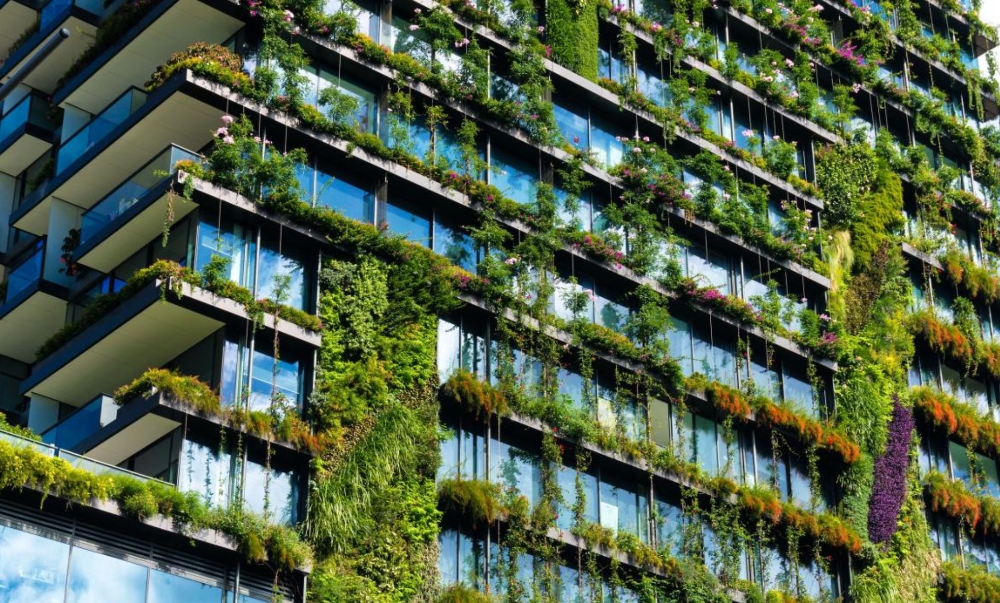Comments
- No comments found

As environmental challenges intensify, innovative ways of managing water have become essential.
Fortunately, many new strategies for obtaining, cleaning, and distributing water have proven viable, including green urban water infrastructure, decentralized water treatment, and various methods of improving efficiency. To make a difference, all we need is the foresight to adopt them.
Around the world, green urban planning initiatives have transformed our relationship to waste. Different regions know green planning initiatives by different names. There's the sponge city approach in China; sustainable urban drainage systems in the UK; water-sensitive urban design in Australia; the Active, Beautiful and Clean Waters (ABC Waters) Programme in Singapore; landscape stormwater management in Denmark; and low-impact development.
Whatever the name, green urban planning relies on effective strategies. Instead of pavement and concrete assets that can aggravate flooding and impede the recharge of groundwater, green urban design uses permeable pavement and green spaces that soak up stormwater even as they make the air more breathable and cities more livable. Instead of heat islands, green planning uses cooling urban forests and recreational areas that outperform the water-handling capability of their more expensive concrete-and-pipe counterparts.
One firm, Turenscape, has completed over a thousand sponge-city projects. More than 70 cities in mainland China have adopted sponge-city initiatives since 2015.
Another approach, xeriscaping, involves planting local species that are more compatible with the local climate than grass lawns and require little or no irrigation to thrive. Green roofs and green walls do elegant double duty. And in households, rain barrels and rain gardens capture stormwater that can be productively used before it reaches gutters and overwhelms drainage systems.
Such initiatives enable communities to more resiliently cope with droughts and floods, reduce the depletion of groundwater, enjoy cooler and more livable cities, and achieve many other benefits at lower short-term and long-term costs than is possible using only traditional methods/
Centralized water and wastewater treatment is characterized by large-scale water infrastructure. Throughout the twentieth century, mega-plants and expansive collection and distribution pipe networks served giant service areas.
But mega-infrastructure has always been mega-expensive. Design, negotiations, and construction stretched on for years or even decades, eating up enormous resources. Once the plants were operating, the costs of treating and pumping water for long distances proved a burden to ratepayers. And before you could say "nonrevenue water," the pipe networks began springing leaks. Another cost: repair and maintenance.
Decentralization of water and wastewater infrastructure means placing cheaper, more energy-efficient, and smaller plants as close as possible to the smaller areas they serve.
Pipe generally accounts for more than half of the total cost of centralized projects. The cost has often proved an insurmountable obstacle for communities that want to treat and reuse wastewater for non-potable purposes. They not only need a long pipeline to a distant plant; they also need a second costly pipeline to bring the treated effluent back for reuse. And then there are the costs of long-distance pumping. When plants are decentralized, they don't need as much pipe, since they are near the communities getting the water.
Decentralized treatment keeps the water at home, where it can be reused for park and landscape irrigation, street cleaning, dust reduction, purple-pipe systems, or virtually any nonpotable application -- without pumping from already overpumped natural water sources.
Newer modular units can be installed onsite in a more flexible way than traditional concrete construction. This is especially advantageous in remote areas or rapidly growing regions where local utilities have strained to keep up with growth.
When severe weather hits a system consisting of many small plants, the entire region may be more resilient. If one or two plants go down, the problem is relatively contained: the region as a whole still gets service. On the other hand, when a large-scale facility goes down, it may take months to get it all up and running again, and the entire region suffers until this happens.
Using water once, and then discharging it contaminated into the environment, is damaging and wasteful. By removing the main barrier to water reuse, decentralization helps make possible the often touted but seldom achieved circular economy.
Older water and wastewater systems rely on massive assets that serve huge areas. The inertia that keeps them in place is both physical and psychological. Yet all it takes is a quick investigation of greener alternatives to realize that they not only protect the environment but are also cheaper and more efficient.
Green water initiatives also bring with them a matrix of under-appreciated ancillary benefits that go beyond the bottom line for communities and surrounding ecosystems. While traditional ways served the world well, inflexible adherence to the water management practices of the past lets major opportunities to form a healthier relationship with our natural water resources and ourselves go unexplored.
Leave your comments
Post comment as a guest